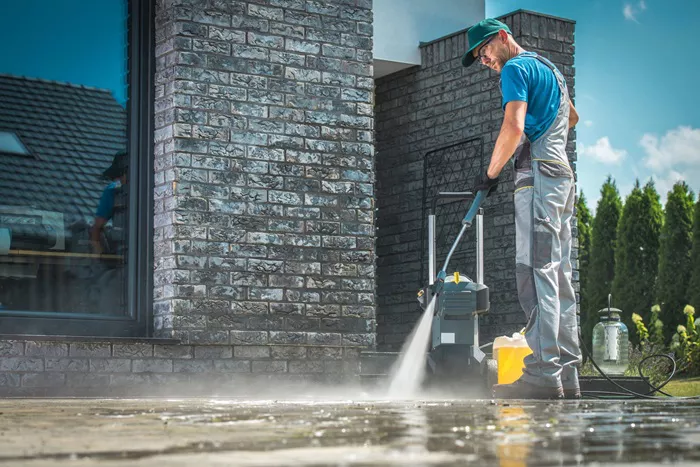Trying to pick the perfect robot vacuum and/or mop in today’s market can be overwhelming. Without knowing the companies and their designs, there always seems to be some new or alternative feature that gets in the way of your final decision.
If you’d asked me a few years ago which models were best for daily cleaning that didn’t require much attention from you, I’d probably have said that the big brands all performed similarly—especially in the age of “bumper robots.”
However, in 2024, my thoughts on the top models have clearly shifted and have finally converged on a few key brands that really push the envelope with each new robot. The most advanced of these, and my absolute favorite, is the new Yeedi M12 PRO+ that I’ve been checking out over the past few weeks.
Yeedi has really outdone themselves with this product, and they deserve a pat on the back for their efforts. Below, you’ll find a breakdown of its features, what to look out for during installation, my personal impressions, and some key tips to keep in mind when installing it in your home (especially because, as amazing and life-changing as this technology is, it’s not perfect, like every other upgrade model worth considering).
For those who aren’t familiar with it, let’s take a quick look at its main features and what it can do once it’s up and running. The Yeedi M12 PRO+ package includes a robot vacuum and mop combo that can navigate your home, and an Omni docking station that acts as its base to keep it running at its best.
It offers up to 11,000Pa of suction power, far more than many of its more expensive competitors that offer much less suction power. The center and side brushes effectively remove debris from your home and prevent hair entanglement, especially useful for homes with hair-shedding people and pets. It comes with two mop pads, one of which extends outward to better clean those hard-to-reach and easy-to-miss corners and places like under radiators.
It uses TrueDetect 3D 3.0 and TrueMapping 2.0 technologies for navigation and object recognition, which not only maps the layout of your home, but also plans the most efficient cleaning routes. Of course, you can also fully adjust and customize almost all of its features through the Yeedi app: create cleaning schedules, change performance settings, modify maps, and more.
The Omni base is equipped with a 3.4-liter trash bin, which is automatically emptied when the robot is connected. The trash bag inside the trash bin can hold up to 90 days of trash and is easy to replace. It also has two removable water tanks, a 4-liter fresh water tank for fresh water and a 3.5-liter dirty water tank for dirty water.
When the robot returns to the base and reconnects to the base, water is automatically poured into these two water tanks and refilled. In addition, its functions do not stop there. In order to maintain performance and hygiene standards, the robot’s mop pad is also washed and dried at high temperature.
Specs/Features at a Glance:
Vacuum Power Regulation – 11,000Pa
Dust Bin Capacity (Liters) – 3.4
Vacuum Components – Main Brush, Side Brush
Carpet Detection – Yes
Floating Main Brush – Yes
Tangle Detection – Yes
ZeroTangle – Yes
Ultrasonic Carpet Detection – Yes
Pressurization – Yes
Obstacle Detection/Avoidance System – TrueDetect 3D 3.0
Navigation Type – TrueMapping 2.0/LDS
Cleaning Mode – Vacuum Only/Mop Only/Vacuum and Mop/Mop After Vacuuming
Mop Cleaning Method – Cold Water Wash/Hot Water Energy Saving Wash/Hot Water Deep Clean Wash
Robot Dimensions (W/D/H mm) – 353x351x104
Noise Level (dBA) – 65 to 80 (depending on features)
Battery Specifications (Type, mAh) – 5200mAh
Working Time (Minutes) – Up to 290 minutes, depending on setup
Charging time (hours) – 3.1
Robot power rating (W) – 60
Robot operating voltage (V) – 14.4
Once I had unboxed, unsealed, and assembled all the parts onto the charging station and the robot, it was time to begin the actual setup process. I downloaded the Yeedi app by scanning the hidden QR code on the robot, and after setting up my account, I scanned it once more to establish a quick Bluetooth connection between the robot and the app (there are several other ways to connect the two via Bluetooth or Wi-Fi, by the way).
After that, I pressed the appropriate buttons to sync and dock the robot with the charging station for the first time, without any action on my part.
Out of the box, with the battery fully charged, it was time to let it do its first scan, purely for mapping purposes. This took less than 10 minutes, probably because the layout of my apartment is like a maze. During this time, out of curiosity, my two cats and I followed it around and watched it move seamlessly without hitting a single wall, door, loose object, or piece of furniture.
As the robot entered and exited each room, my phone app mapped new sections, ultimately giving me a complete floor plan that I could convert between 2D or 3D models, while also adding labels, boundaries, furniture, and more.
Related topics:
- Greenworks 2,300 PSI Pro Washer Debuts at \$280, More from \$128
- High-Pressure Cleaner Damages 29 Floors of Birmingham High-Rise
- Makita Launches Battery-Powered 40V MAX XGT Pressure Washer

